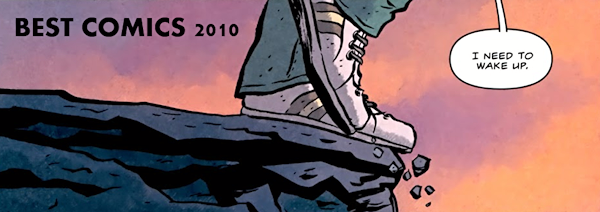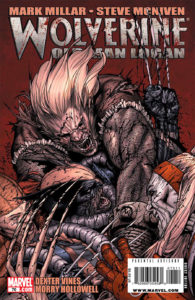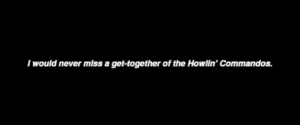“10 BEST COMICS OF 2010”
Por Tim Callahan
Publicado originalmente en Comic Book Resources dot com el 20 de diciembre de 2010.
– – – – – – – – – –
THE TOP 10 COMICS OF 2010 (PLUS AN EXTRA)
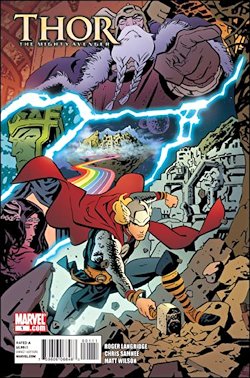
10 — tie. “Thor: The Mighty Avenger,” by Roger Langridge and Chris Samnee
A big year for Thor comics, and some nice work from a variety of creators, but nothing else in Asgard comes close to this beloved-but-too-soon-canceled series from Langridge and Samnee. The opening two issues do a nice job setting up this sitcom-ish, heartfelt Thor saga, but the series quickly moves beyond the implications of that first story and as it engages the Marvel Universe at large you can see how special it really is. Langridge and Samnee nail the characterizations of Ant-Man, Namor and the Warriors Three (to name a few), and this series is about as close as we’ve ever come to the original, stated intent of the “Ultimate Universe,” even though this isn’t an Ultimate title: accessible comics that get the essence of the characters and stories exactly right.
And Langridge and Samnee make it seem so easy.
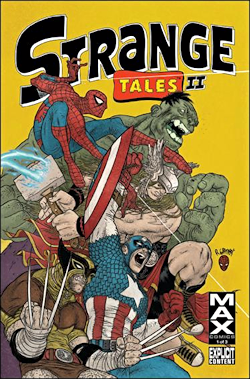
10 — tie. “Strange Tales II,” by Rafael Grampa and more
Yes, it’s incredibly reductive to say that this Marvel MAX series can be billed as being the work of Rafael Grampa and “more.” I mean, Jaime and Gilbert Hernandez are involved. Dash Shaw. Kate Beaton. Farel Dalrymple. Tony Millionaire. James Stokoe doing a gorgeous Galactus. These are some of the most interesting comic book artists working today, and I seek out their work regularly. But it’s the short Grampa “Wolverine” story that breaks this series out of the cute-anthology-of-indie-creators-doing-Marvel-gags ghetto. Grampa writes and draws the quintessential Wolverine story in the first issue and sets the bar too high for anyone else to reach. They couldn’t have known he was going so far above the typical expectations for a comic like this, but he did, and I hope a third volume of this experiment will see other creators raising their game to the Grampa level, if that’s even possible.

09 — “The Wrong Place,” by Brecht Evens
While so many of the best comics this year felt insular and hermetic, Evens watercolor graphic novel seems celebrative of the sprawling relationships that make up our world. It’s an illusion, of course, even within its pages, as the characters double back on themselves and the apparent sprawl is at the service of a story about a small group of people in the end. But it feels loose and lively, and Evens doesn’t spend time pondering the deep connective tissue between humans when he can show the relationships in action, through gossip on the train, at dinner parties, in the bedroom. The book might conclude with a promise for more, but it’s a promise that leads outside of its pages, into the world around us.
“The Wrong Place” isn’t a comic about characters inside a comic book. It’s a comic that engages with something greater: the messy life we lead, both joyous and sad (but mostly joyous, if we can accept it).
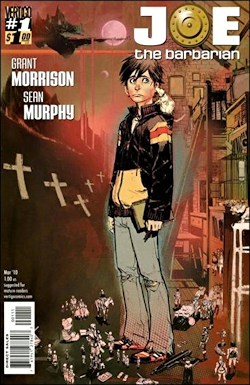
08 — “Joe the Barbarian,” by Grant Morrison and Sean Murphy
Sean Murphy overshadows Grant Morrison on this series, packing every pages with energy and intricate detail—whether it’s the real world or one of hallucination. Structurally, this is a simple story, and the characterizations are equally two-dimensional, but that’s the mode Morrison and Murphy work within to give us a vision of imagination overlapping with reality. In this story, a barking dog can seem like a dragon and an overflowing sink can feel like a raging waterfall, and Joe can no longer rely on his senses. Murphy does a spectacular job making it all seem like a single universe, in which all of these truths can coexist, and Morrison steps aside to let him do just that. If it had reached its end by the time I compiled this list, it may have ended up in even stronger position. Morrison usually sticks his landings.
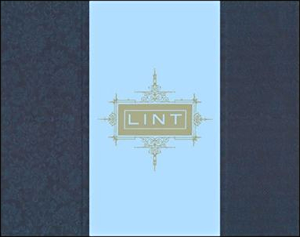
07 — “Acme Novelty Library” Volume 20, by Chris Ware
I don’t know how much more of the tiny lettering my eyes can take, but the strain involved with literally reading this book is surely part of the experience. The story of Jordan Wellington Lint, from his moment of birth to his moment of death, is a story of suffering, but not in the manner of the Good Book’s Job. Lint is no blighted figure of legend. No metaphor for the depths of faith or the capacity to withstand loss. Lint is merely a man trying to make his way through the world, following paths he shouldn’t take, maybe because that’s how he was raised, or maybe just because he followed a faulty instinct. Ware’s diagrammatical storytelling seems to indicate answers, but it’s never as simple as “his dad was this way, so he turned out that way,” even if Lint himself may fall into that trap of misunderstanding. Ultimately, this is Chris Ware showing the life of one man—not everyman—and saying, “look.” And we must.
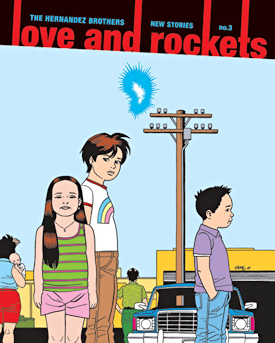
06 — “Love and Rockets New Stories” #3 by Jaime Hernandez and Gilbert Hernandez
I first picked up “Love and Rockets” around issue #18 of the original series, over 20 years ago. And I’ve filled in the gaps in my collection in the years since, through the various reprints and collections and whatever single issues I could grab. Though the sheer volume (and consistent quality) of the work has been astonishing, and astonishingly good, I’ve never felt like any single “Love and Rockets” issue or volume has been something I’d call a favorite of mine. Or anything that would rank near the top of any “Best of” list for a given year. It would always be “merely good” or maybe it’s just that we’ve come to expect such quality on a regular basis that we don’t—I don’t—appreciate how great the Hernandez brothers really are.
“Love and Rockets New Stories” #3 reawakened me to the greatness I had been overlooking. True, it’s much stronger than the previous two volumes, in which the brothers played with genre and didn’t get to the narrative heart of their stories, but when they do something like this volume, in particular the Jaime stuff with Ray and Maggie, and the flashback story, well, it’s just superior comics. The best of the best, from two veterans at the top of their game.
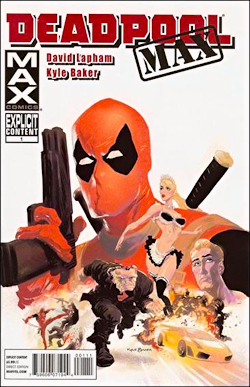
05 — “Deadpool MAX,” by David Lapham and Kyle Baker
Surging to the Top 5 at the end of the year, this madcap, absurd, wildly hilarious take on a character that I have never enjoyed or understood is shocking in all the right ways. Like the other great comics of the year, summarizing this thing is pointless—it’s all about the experience, and Kyle Baker makes it all look oh so good.

04 — “Parker: The Outfit,” by Darwyn Cooke
This is a masterful piece of storytelling. Whether it’s Darwyn Cooke shifting up his style for each heist or the bold moments of climactic confrontation wrapped around a hard-boiled narrative, this is a book worthy of study and admiration. It’s also a hell of a page-turner.
Cooke is a formalist at heart—or on the page—and he’s able to let that side of him show a whole lot more in this volume than in his first Parker book, where he seemed too confined by the original novel. Here, he’s not Cooke telling a Richard Stark tale. He’s Cooke, using a Stark story to do his own thing. It’s a transformative work, in more ways than one.

03 — “Batman and Robin,” and “Batman: Return of Bruce Wayne,” by Grant Morrison, Frazer Irving, Cameron Stewart, and more
Sure, it’s two series jammed into a single slot on this list, but it’s my list, and, honestly, it’s one story, as we all know. I could have included the “Batman” issues in here as well, but I’m not sure they add all that much that wasn’t already implied by what came before and after. Yet this year’s conclusion to the Dr. Hurt is Evil/Bruce Wayne Lost in Time saga was some kind of superhero masterpiece, wasn’t it?
That’s a rhetorical question, because we already know the answer.
And it is “yes.”
The art is ragingly inconsistent, particularly on “Return of Bruce Wayne,” but throughout this years issues of that series and the mainline “Batman and Robin,” Grant Morrison has been knocking down the dominoes and seeming to have a hell of a time doing it. Whether it’s the mind-bending battle at the end of time or the nourish detective work in early Gotham or the Hawthornian puritan drama or the reveal of Oberon Sexton or the final fate of Dr. Hurt, this has been a series of twists and turns and tropes and symbols and patterns and ideas that the superhero world is all the richer for.
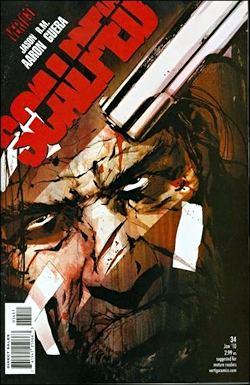
02 — “Scalped,” by Jason Aaron, R. M. Guera, Davide Furno, and Jason Latour
Every year I make one of these lists, and every year “Scalped” is in the Top 10, but it never quite cracks the top spot. But it is surely the best series of the last four years, cumulatively. It is so, so good, and we get a reminder of that with each compelling issue.
This year gave us the arrival of Dash’s father and an emotionally complex tale of being “Unwanted.” We also got a side story about life on the edges of the Rez, and a look inside the buffoonish tragedy of Sheriff Wooster Karnow. The art, whether its Guera or Furno or Latour, is consistently excellent, and Aaron writes dialogue as well as anyone in the comic book industry, ever.
“Scalped” is great comics. Period.
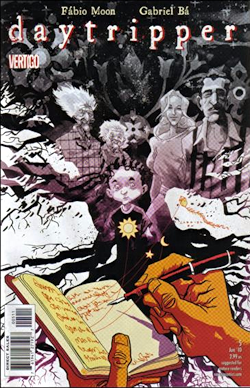
01 — “Daytripper,” by Fabio Moon and Gabriel Ba
I was disappointed by the first issue of this series. I expected something amazing from the twins from Brazil. I wasn’t patient enough.
By the time I understood what they were doing, which was about issue #3—savvy readers would have picked up on it long before that—I realized that something amazing was well underway. Because the story Moon and Ba were telling wasn’t just a story about one man’s life, it was a story about capital-L Life (and not the board game or the cereal, either). In contrast to Chris Ware’s “Acme Novelty Library” which hones in on one man, “Daytripper” tells the story of one man to illuminate the great passions that surround us. In methodical—but never clinical—fashion, Moon and Ba explore love and death, family and friends, violence and peace, fathers and sons, success and failure, and all the crackles of life in between. It’s a poetic story, but not in an ethereal way. It’s rhythmic and meaningful and outside the bounds of genre or convention, even if Moon and Ba build their own conventions inside the pages of this ten-issue series.
Here’s a book that’s due to come out in trade paperback over the winter. It deserves something more. An oversized Absolute Edition, a hardcover monument to its timelessness. It’s the best comic of the year, though, in any shape or size.
